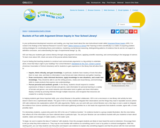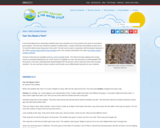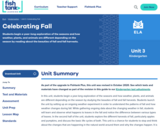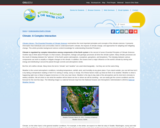
Choose from a selection of Bingo Cards to play fun games on a variety of topics.
- Subject:
- Practitioner Support
- Material Type:
- Module
- Provider:
- PBS LearningMedia
- Date Added:
- 11/06/2023

Choose from a selection of Bingo Cards to play fun games on a variety of topics.

Biology 2e is designed to cover the scope and sequence requirements of a typical two-semester biology course for science majors. The text provides comprehensive coverage of foundational research and core biology concepts through an evolutionary lens. Biology includes rich features that engage students in scientific inquiry, highlight careers in the biological sciences, and offer everyday applications. The book also includes various types of practice and homework questions that help students understand—and apply—key concepts. The 2nd edition has been revised to incorporate clearer, more current, and more dynamic explanations, while maintaining the same organization as the first edition. Art and illustrations have been substantially improved, and the textbook features additional assessments and related resources.


By the end of this section, you will be able to do the following:
Define global climate change
Summarize the effects of the Industrial Revolution on global atmospheric carbon dioxide concentration
Describe three natural factors affecting long-term global climate
List two or more greenhouse gases and describe their role in the greenhouse effect

This ZOOM video segment shows how to create a self-contained environment and explores evaporation, condensation, and precipitation.

This interactive resource adapted from NASA describes the different temperature, precipitation, and vegetation patterns in seven biomes: coniferous forest, temperate deciduous forest, desert, grassland, rainforest, shrubland, and tundra.

In this video, Paul Andersen describes both weather and climate. Weather refers to the day-to-day conditions on the Earth's surface, including temperature, wind, humidity, air pressure, and precipitation. Climate means the long-term conditions on the Earth's surface. Both climate and weather are determined by sunlight, water, landforms, and life forms. [7:47]

A new instructional model, called Argument-Driven Inquiry (ADI), is introduced to elementary teachers in this article. The author shows how school librarians and classroom teachers can collaborate to help students construct and communicate evidence, or arguments. Evidence buckets, a collaborative activity, and related online resources are presented. The article appears in the free online magazine Beyond Weather and the Water Cycle, which is structured around the seven essential principles of climate literacy.

Students investigate the weather from a systems approach, learning how individual parts of a system work together to create a final product. Students learn how a barometer works to measure the Earth's air pressure by building a model using simple materials. Students analyze the changes in barometer measurements over time and compare those to actual weather conditions. They learn how to use a barometer to understand air pressure and predict actual weather changes.

In this nonfiction story, young readers and listeners learn how scientists use cross sections from trees to reconstruct past climates. Versions are provided for readers at two levels, k-2 and 3-5, and in text-only and illustrated formats. The story is also available as an electronic book with recorded narration. An original story is a regular feature of each issue of the free, online magazine Beyond Weather and the Water Cycle. The story can be used in science and literacy lessons and activities throughout the magazine.

See the many things that the wind touches and moves as it blows about. Book includes audio narration in 21 additional languages with text in English.

In this video segment adapted from NOVA, find out how cars made of a material stronger than steel and half the weight can help combat climate change.

This interactive resource adapted from the National Park Service presents the key concepts of cave and karst systems, including how and where they form, different types, and various cave environments.

Students begin a year-long exploration of the seasons and how weather, plants, and animals are different depending on the season by reading about the beauties of fall and fall harvests.

Turn your classroom into a winter wonderland with these festive activities, videos, and interactive games for grades PreK-12. Explore different winter holidays, investigate snowflakes using math and science, create winter-themed crafts, and boost your students' energy levels during the colder months!

In this video adapted from the Arctic Athabaskan Council, learn how warmer temperatures in the Arctic are transforming the landscape, triggering a host of effects such as permafrost thawing and insect infestations.

In this video segment adapted from NOVA, scientists are on the hunt for tornadoes. Using Doppler radar, they gather data in the hopes of solving the mystery of how tornadoes form.

In this video produced for Teachers' Domain, learn about MIT professor Cathy Drennan's research into microorganisms that remove carbon dioxide, a greenhouse gas, from the atmosphere.

This article continues an examination of each of the seven essential principles of climate literacy on which the online magazine Beyond Weather and the Water Cycle is structured. Principle 2 covers the complex interactions among the components of the Earth system. The author discusses the scientific concepts underlying the interactions and expands the discussion with diagrams, photos, and online resources.